Pepper Bull-calf is a type of sweet peppers that are very widespread in Russia. Since a growing number of gardeners dream of a garden with pepper in their area, the crop of which is planned to be used as part of a vitamin salad or for harvesting for the winter, it is worth getting closer to the characteristics of the variety, its strengths and weaknesses, and recommendations for growing.
Content
Grade description
Although Bychok pepper is sometimes called Bulgarian, it has taken root well in different regions of Russia. Depending on the climate, it is necessary to wait 3-4 months before the first crop is harvested.
This variety is classified as a spreading plant, reaching half a meter in height. The leaves of the plant are green, medium in size. They have a slightly wrinkled surface.
Technical grade ripple peppers acquire a conical shape, rounded with a slightly narrowed top and weak ribbing. Inside it are several chambers with seeds. The wall of the fetus reaches 5-6 mm and is distinguished by juiciness, pleasant taste and aroma.
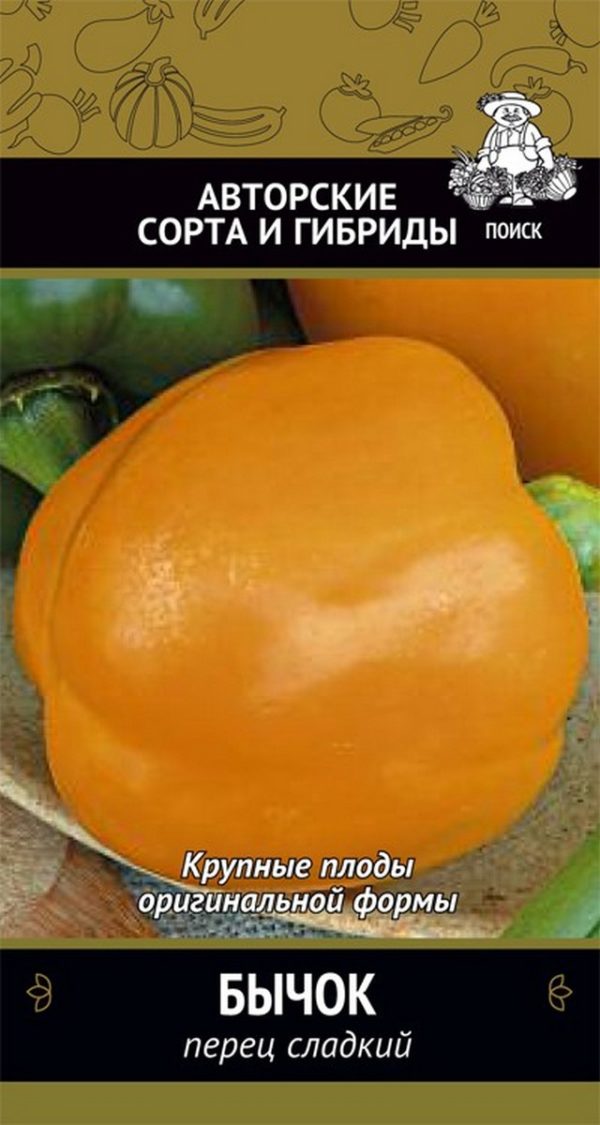
Advantages and disadvantages
Pepper Bull-calf is widespread due to a number of obvious advantages:
- This species belongs to the universal varieties that take root in different climatic zones.
- The variety showed good results in greenhouse conditions and when planting in open ground.
- One of the undoubted advantages of this variety of pepper is high yield. So, from a plot the size of a square meter, you can get about 5 kg of crop and more.
- In the process of selection, the variety was vaccinated against fungal infections and other diseases dangerous to the plant. This facilitates the work of the summer resident.
- The fruits of this variety of pepper differ not only in a large number of vitamins, but also in a pleasant taste. With their use, a large number of culinary recipes were invented. This provides a constant high demand for this type of pepper.
When growing this crop, it is worth considering that a lack of light and heat can affect the health of seedlings and at the same time reduce yield. Among the main disadvantages, gardeners indicate only the high price of seeds.
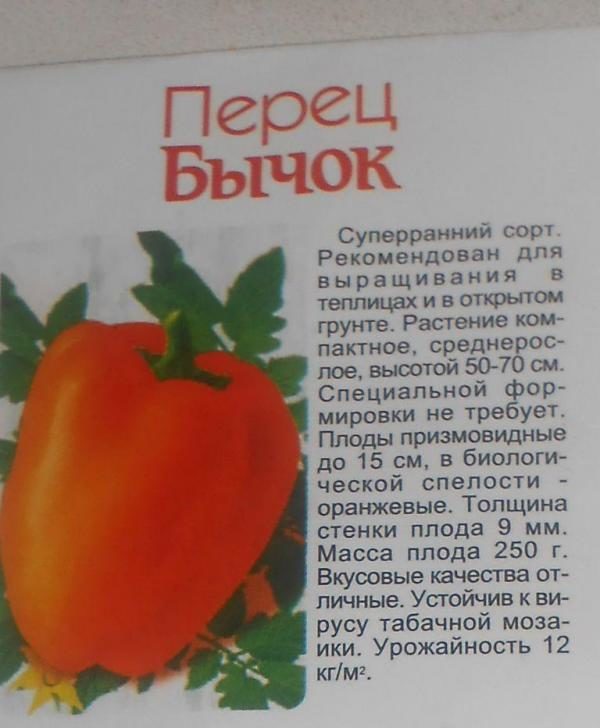
Seedling preparation terms
To have time to get a crop in the summer, you need to start preparing seedlings in late February or early March. To do this, prepare fertile soil.
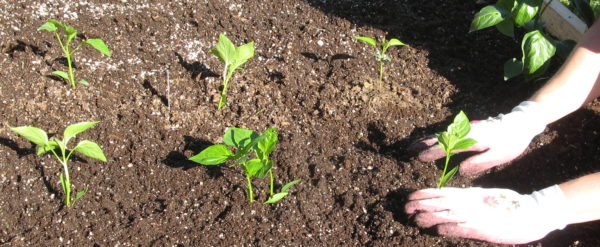
As soon as the container is filled with soil, seeds are placed in it to a depth of 1-1.5 cm. The distance between future seedlings should be such that their root systems do not interfere with each other.
After seed germination, you need to wait for the appearance of the first two true leaves on the plants. For an experienced gardener, this is a sign by which the term of a pick of plants is determined.At the end of the seeding for individual tanks, watering is necessary. After 2 weeks, you will need to fertilize the soil under the seedlings with one of the liquid compounds that can be purchased at the store.
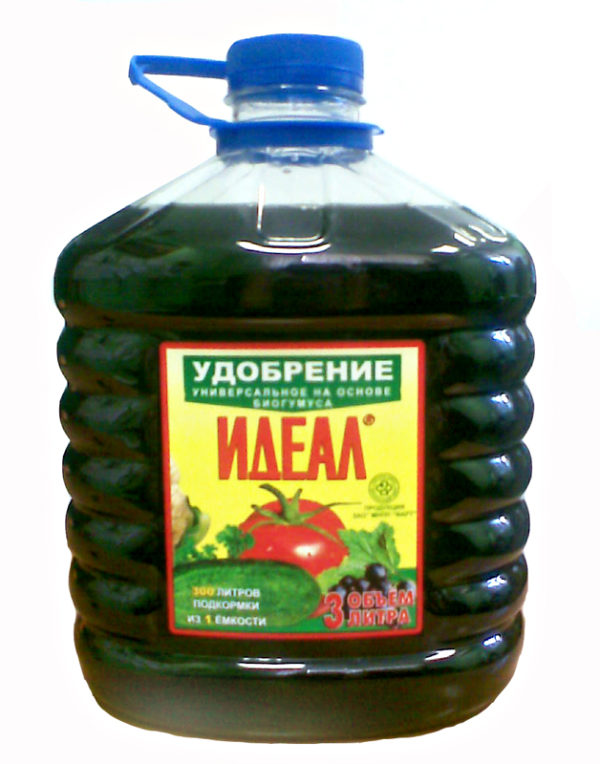
Landing
Toward the end of spring, a period begins in which pepper is planted in open ground. From the moment of planting the seeds until the beginning of this process, 40-60 days pass. So that the seedlings are well rooted in the new soil, you do not need to start this process ahead of schedule. If young peppers are at home for more than 60 days, they can be too large. This will make transportation and landing difficult.
To ensure good growth, it is necessary to determine the place for the beds and properly prepare it. The choice will be greatly influenced by the culture that was planted on this site last season. Pepper seedlings take root well where they used to grow:
- onion;
- cucumbers
- pumpkin;
- cabbage;
- zucchini:
- carrot.
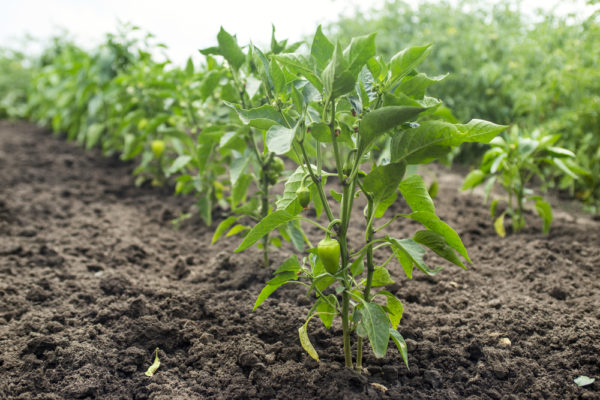
It is worth remembering that for this variety of plants heavy clay soil is not very suitable. It is possible to improve conditions on such soil by fertilizing it with peat or humus. Before planting the peppers, you must prepare the holes. They should be at a distance of 30 cm from each other and 50 cm between the rows. This will provide an opportunity for the full development of the root system for each seedling.
Immediately before placing the plant in the hole, it is necessary to put a spoonful of mineral fertilizer on its bottom, which should then be mixed with the soil. To remove a seedling from a container is so as not to damage its root system. After he is carefully transferred to the hole.
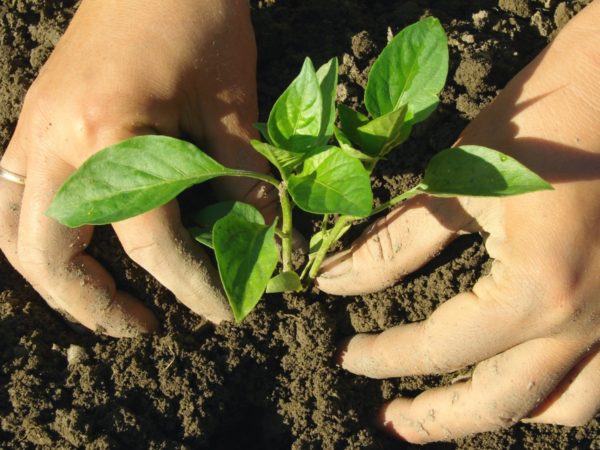
Care Features
Pepper shoot care includes 4 essential elements:
- watering;
- weeding;
- loosening;
- top dressing.
Water is one of the main conditions for growth. For watering, it is worth using only a warm liquid with a temperature of about 24 degrees. Some gardeners use plastic bottles for this purpose. They are filled with water and left in the sun. During the day, under the influence of sunlight, their contents are heated to the required temperature.
The required amount of water in the periods before and after the beginning of flowering is different. After planting in open ground, watering is required once a week or 2, subject to dry weather. After the beginning of flowering and the formation of fruits, the amount of fluid increases to 2-3 times a week.
An important condition for good growth and fruiting is the free access of air to the roots of plants. Therefore, loosening is necessarily required after irrigation or precipitation.
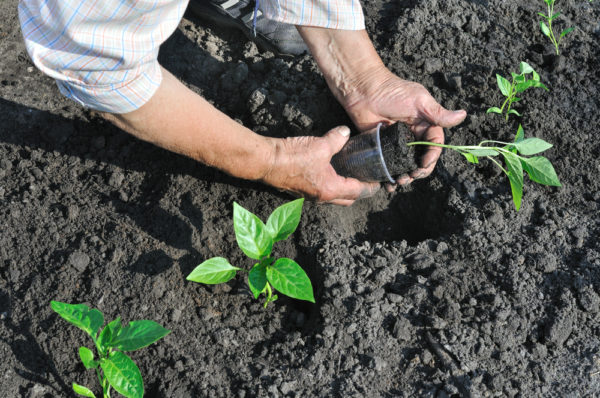
Fertilizing plants with fertilizers is carried out about 4-5 times per season. To do this, use bird droppings, which are bred with water in a ratio of 1:15, or slurry in a ratio of 1:10. Although the Bull-calf variety is considered vaccinated, if necessary, you need to be prepared to treat it from diseases or pests.
When harvesting, there are two types of fruit ripening:
- technical maturity is determined by the achievement of a fruit of a certain shape without acquiring the appropriate color;
- biological ripeness implies full compliance of the fetus with parameters in size, color and shape.
In some cases, do not wait until the fruit fully ripens on the branch. Having reached technical maturity, he will be able to acquire the desired color already during storage.
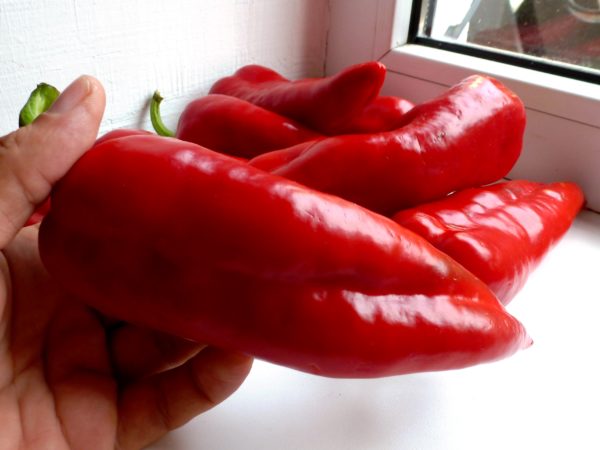
Grade Reviews
Opinions of gardeners on the variety Bull-calf are diverse. Some prefer fruits that are fully ripe on the bush, while others recommend removing them green to achieve ripeness already in storage. Opinion on the quantity and quality of the collected fruits of disagreement does not cause.
Getting strong seedlings can be difficult for beginner gardeners. However, after the correct selection of the temperature and light conditions, this problem gradually comes to naught.
Marina Sergeevna, 47 years old, the city of Azov:
I grow peppers for a very long time. This variety is very prolific, annually gives a good harvest. The main thing is to properly care.
Igor, 38 years old, p. Sunzha, Stavropol Territory:
For the first time planted pepper of the variety “Goby”. He took a good harvest. The variety is very tasty. Next year I plan to plant this variety again.
Conclusion
To summarize: pepper Bull calf is one of the common mid-ripening varieties of this plant, characterized by high productivity. The size and palatability of the fruits allow you to use both fresh and use as an ingredient for preservation.
The basis for obtaining healthy, fruitful plants is the correct and timely planting of seeds. In April or May, seedlings can be placed in a greenhouse or open ground, depending on conditions. Mandatory elements of proper care will be watering, loosening, top dressing, protection from diseases and pests. Subject to all conditions, the plant will give a generous fruit that can be harvested at the stage of technical or biological maturity.




 Calorie pepper stuffed with meat and rice - BZHU per 100 grams
Calorie pepper stuffed with meat and rice - BZHU per 100 grams Gorky pepper - the best varieties for open ground
Gorky pepper - the best varieties for open ground Hot pepper seeds - the best varieties for open ground and reviews
Hot pepper seeds - the best varieties for open ground and reviews Capsicum tincture for hair - how to use and reviews
Capsicum tincture for hair - how to use and reviews